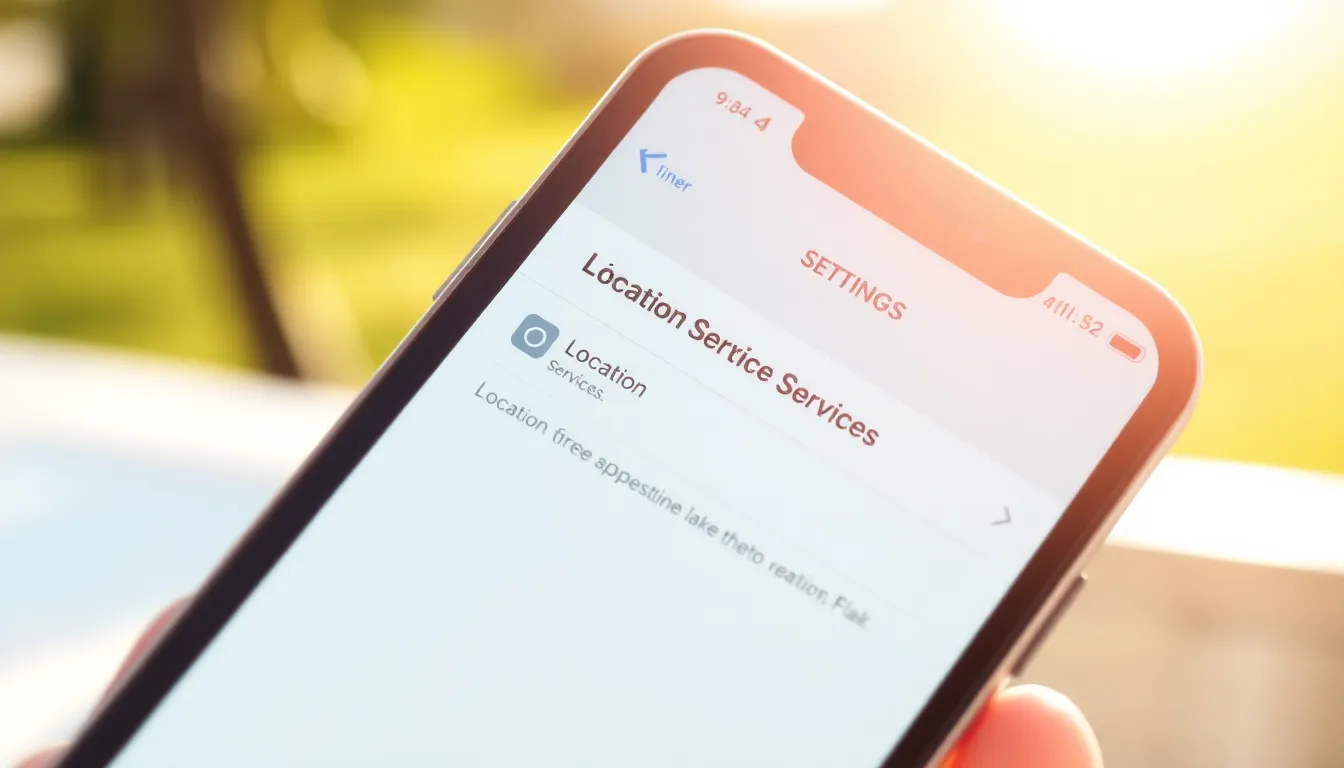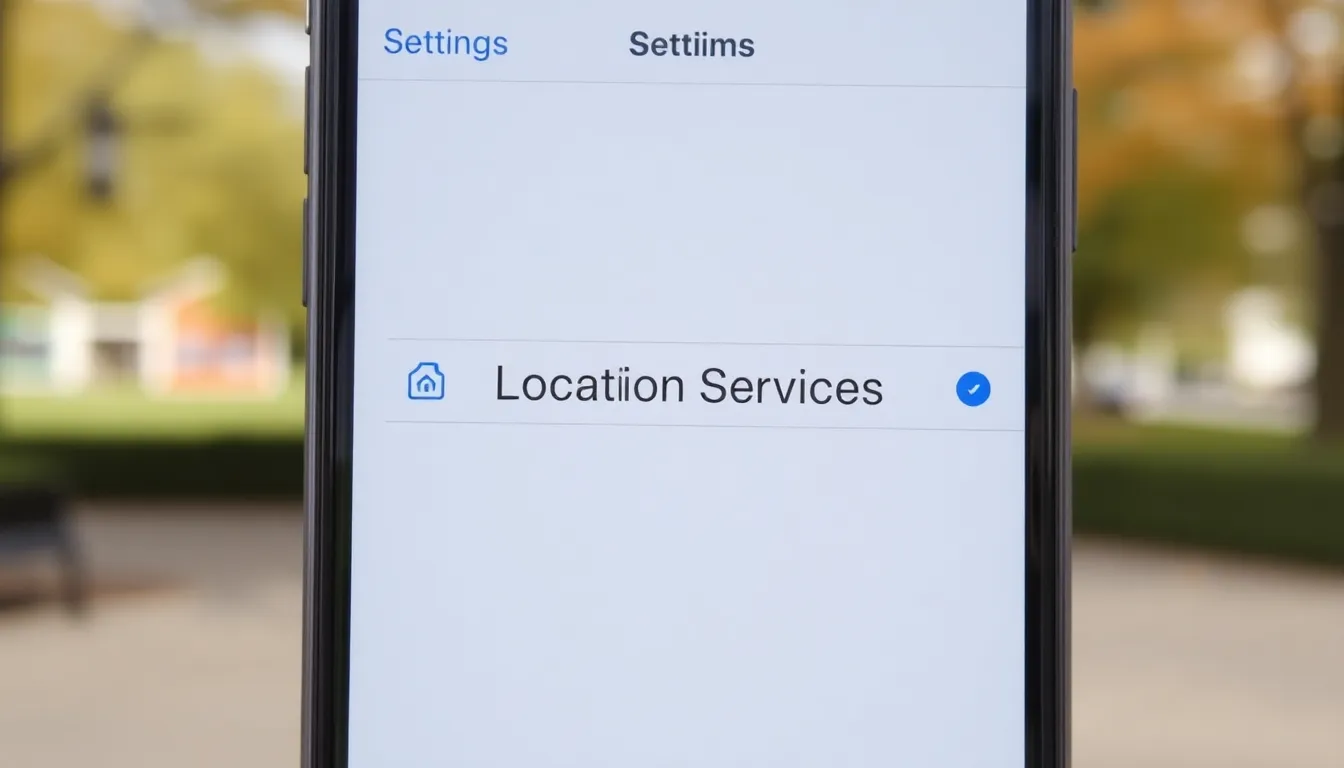Table of Contents
ToggleEver wondered where that stunning sunset photo was taken or which café served that delicious latte? With the magic of location services, your iPhone can do more than just capture memories; it can pinpoint exactly where they happened. Turning on location for your photos not only adds a fun twist to your photo albums but also makes it easier to relive those moments later on.
Understanding Location Services
Location services on an iPhone allow users to track and tag locations where photos are taken. These services enhance the photography experience by storing geographical data alongside images.
What Is Location Services?
Location services use GPS, Wi-Fi, and cellular data to determine a device’s position. This technology enables apps to access and utilize location data in real-time. Apple provides users control over which apps have access to location information, ensuring privacy and security. Location services contribute to various functions, including navigation, weather updates, and photo tagging.
Why Enable Location for Photos?
Enabling location for photos allows users to automatically embed geographic coordinates in their images. This feature helps organize and retrieve photos based on location. Users can view where they captured each moment on a map, making it easier to recall experiences. Those who travel frequently find this feature beneficial for remembering special sites and moments. Adding location data transforms photo albums into interactive memories.
Steps to Turn On Location for Photos on iPhone


Turning on location services enhances photo experiences. Users can easily customize settings to ensure their photos are geo-tagged.
Accessing Settings
Accessing settings starts with locating the Settings app on the iPhone home screen. Tapping on this app opens the main settings menu. Users should scroll down and select Privacy & Security. Within this menu, a Location Services option will appear. Choosing this option reveals various settings for location usage.
Enabling Location Services
Enabling location services requires toggling the switch next to Location Services to the on position. Once activated, this setting allows apps to access location data. Users need to scroll down to find the Camera app and confirm its access. Tapping the Camera settings showcases options for allowing location access.
Adjusting Camera Settings
Adjusting camera settings involves navigating back to the main settings menu. Selecting the Camera option provides various functionalities related to photography. Here, the toggle for “Use Location Services” must be activated. Allowing this setting ensures that photos taken will automatically include geographical coordinates.
Managing Location Data in Photos App
Location data enhances photo albums by providing context to the images captured. Users can effortlessly manage this information within the Photos app.
Viewing Location Information
To view location information, open a photo in the Photos app. Tap the info (i) icon in the lower right corner. This will display details including the date, time, and exact location where the photo was taken. Zooming in on the map reveals more specific details about the location. Users can see additional features such as nearby points of interest. This interaction allows for a richer experience and better recollection of memories tied to those places.
Editing or Removing Location Data
Editing or removing location data involves a few simple steps. Start by opening the desired photo and tapping the info (i) icon. Choose Edit Location to modify or delete existing data. Enter a new location name or select a different option from the suggested list. To remove location data, select Remove Location. Confirm your choice, and the geographic coordinates will no longer be associated with the photo. This ability ensures privacy or allows users to curate their photo collections to meet their preferences.
Troubleshooting Common Issues
Location services may sometimes not work as expected. Users can ensure that Location Services is enabled in the Settings app. Navigating to Privacy & Security and selecting Location Services shows the current status. If location services remain inactive, checking the device’s software version for updates helps resolve bugs. Restarting the iPhone might also refresh connections and restore functionality. Users should also confirm internet connectivity, as Wi-Fi and cellular data assist location accuracy.
Camera access permission issues may prevent location tagging on photos. Users can double-check permission settings for the Camera app in the Privacy & Security section. Ensuring that location access is set to “While Using the App” enables tagging. If permission appears correctly set but still doesn’t work, toggling the setting off and then back on can reset access. Restarting the device after making changes often resolves lingering issues, ensuring the app functions as intended.
Enabling location services on an iPhone not only enhances the photography experience but also allows for a deeper connection to captured memories. Users can easily organize and retrieve photos based on where they were taken, making it simple to relive special moments.
With the step-by-step guide provided, anyone can quickly turn on location services and enjoy the benefits of tagging their photos. By managing location data within the Photos app, users have greater control over their memories while ensuring privacy when needed.
Taking these steps transforms ordinary photo albums into interactive collections that tell a story tied to unique locations.





